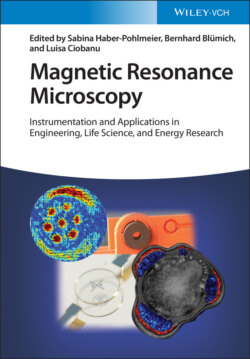Читать книгу Magnetic Resonance Microscopy - Группа авторов - Страница 44
2.5 Conclusion and Future Prospects
ОглавлениеWhile used for years in the field of microwave engineering, ceramic probes dedicated to MRI have only recently been developed for other various applications, from clinical imaging to microscopy. The principle is to excite one specific eigenmode of a high-permittivity resonator like a disk or ring, and to exploit the stimulated mode magnetic field as a transmit and/or receive field for MRI. The particularity of the eigenmodes used is the spatial coincidence of the maximum magnetic field with low electric field levels as well as the purely magnetically induced (nonconservative) nature of the electric field in the sample. Positioning the sample in this specific region therefore limits the losses due to the electric field interaction with the conductive biological materials, while keeping B1 values sufficiently high to perform imaging. The recent development of low-loss, high-permittivity ceramic materials has had a significant impact on the performance of dielectric probes, limiting the intrinsic losses.
Most probes proposed for MRM exploit the first TE mode of cylindrical high-permittivity resonators. Future work on developing probes exploiting the first hybrid mode would be beneficial to widen the possibilities of using ceramic probes. Another point of interest would be to develop arrays of ceramic probes to significantly reduce the acquisition time, which is a critical experimental parameter when performing MRI.
